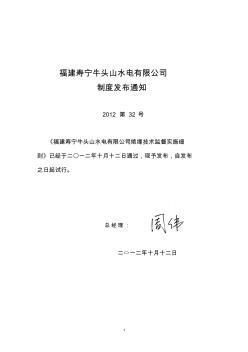Chapter 1 Introduction to Machinery Principles
1.1 Electrical Machines, Transformers, and Daily Lite
1.2 Rotational Motion, Newton's Law, and Power Relationships Angular Position θ / Angular Velocity ω / Angular Acceleration α / Torque τ / Newton's Law of Rotation / Work W/Power P
1.3 The Magnetic Field
Production of a Magnetic Field / Magnetic Circuits / Magnetic Behavior of Ferromagnetic Materials / Energy Losses in a Ferromagnetic Core
1.4 Faraday's Law——Induced Voltage from a Time—Changing Magnetic Field
1.5 Production of Induced Force on a Wire
1.6 Induced Voltage on a Conductor Moving in a Magnetic Field
1.7 Real, Reactive, and Apparent Power in Single—Phase AC Circuits Alternative Forms of the Power Equations / Complex Power / The Relationships between Impedance Angle, Current Angle, and Power / The Power Triangle
1.8 Summary
Questions
Problems
References
Chapter 2 Transformers
2.1 Why Transformers Are Important to Modern Life
2.2 Types and Construction of Transformers
2.3 The Ideal Transformer
Power in an Ideal Transformer/Impedance Transformation through a Transformer / Analysis of Circuits Containing Ideal Transformers
2.4 Theory of Operation of Real Single—Phase Transformers The Voltage Ratio across a Transformer / The Magnetization Current in a Real Transformer / The Current Ratio on a Transformer and the Dot Convention
2.5 The Equivalent Circuit of a Transformer The Exact Equivalent Circuit of a Real Transformer / Approximate Equivalent Circuits of a Transformer / Determining the Values of Components in the Transformer Model
2.6 The Per—Unit System of Measurements
2.7 Transformer Voltage Regulation and Efficiency The Transformer Phasor Diagram / Transformer Efficiency
2.8 Transformer Taps and Voltage Regulation
2.9 The Autotransformer
Voltage and Current Relationships in an Autotransformer / The Apparent Power Rating Advantage of Autotransformers / The Internal Impedance of an Autotransformer
2.10 Three—Phase Transformers
Three—Phase Transformer Connections / The Per— Unit System for Three—Phase Transformers
2.11 Transformer Ratings and Related Problems
The Voltage and Frequency Ratings of a Transformer / The Apparent Power Rating of a Transformer / The Problem of Current Inrush / The Transformer Nameplate
2.12 Instrument Transformers
2.13 Summary
Questions
Problems
References
Chapter 3 AC Machinery Fundamentals
3.1 A Simple Loop in a Uniform Magnetic Field The Voltage Induced in a Simple Rotating Loop / The Torque Induced in a Current—Carrying Loop
3.2 The Rotating Magnetic Field Proof of the Rotating Magnetic Field Concept / The Relationship between Electrical Frequency and the Speed of Magnetic Field Rotation / Reversing the Direction of Magnetic Field Rotation
3.3 Magnetomotive Force and Flux Distribution on AC Machines
3.4 Induced Voltage in AC Machines
The Induced Voltage in a Coil on a Two—Pole Stator / The Induced Voltage in a Three—Phase Set of Coils / The RMS Voltage in a Three—Phase Stator
3.5 Induced Torque in an AC Machine
3.6 Winding Insulation in an AC Machine
3.7 AC Machine Power Flows and Losses
The Losses in AC Machines / The Power—Flow Diagram
3.8 Voltage Regulation and Speed Regulation
3.9 Summary
Questions
Problems
References
Chapter 4 Synchronous Generators and Motors
4.1 Synchronous Generator Construction
4.2 The Speed of Rotation of a Synchronous Generator
4.3 The Internal Generated Voltage of a Synchronous Generator
4.4 The Equivalent Circuit of a Synchronous Generator
4.5 The Phasor Diagram of a Synchronous Generator
4.6 Power and Torque in Synchronous Generators
4.7 Measuring Synchronous Generator Model Parameters
The Short—Circuit Ratio
4.8 Synchronous Generator Ratings
The Voltage, Speed, and Frequency Ratings / Apparent Power and Power—Factor Ratings / Synchronous Generator Capability Curves / Short—Time Operation and Service Factor
4.9 Basic Principles of Motor Operation
The Equivalent Circuit of a Synchronous Motor / The Synchronous Motar from a Magnetic Field Perspective
4.10 Steady—State Synchronous Motor Operation
The Synchronous Motor Torque—Speed Characteristic Curve / The Effect of Load Changes on a Synchronous Motor / The Effect of Field Current Changes on a Synchronous Motor / The Synchronous Motor and Power—Factor Correction / The Synchronous Capacitor or Synchronous Condenser
4.11 Starting Synchronous Motors
Motor Starting by Reducing Electrical Frequency / Motor Starting with an External Prime Mover / Motor Starting by Using Amortisseur Windings / The Effect of Amortisseur Windings on Motor Stability
4.12 Synchronous Generators and Synchronous Motors
4.13 Synchronous Motor Ratings
4.14 Summary
Questions
Problems
References
Chapter 5 Induction Motors
5.1 Induction Motor Construction
5.2 Basic Induction Motor Concepts
The Development of Induced Torque in an Induction Motor / The Concept of Rotor Slip / The Electrical Frequency on the Rotor
5.3 The Equivalent Circuit of an Induction Motor
The Transformer Model of an Induction Motor / The Rotor Circuit Model / The Final Equivalent Circuit
5.4 Power and Torque in Induction Motors
Losses and the Power—Flow Diagram / Power and Torque in an Induction Motor / Separating the Rotor Copper Losses and the Power Converted in an Induction Motor's Equivalent Circuit
5.5 Induction Motor Torque—Speed Characteristics
Induced Torque from a Physical Standpoint/The Derivation of the Induction Motor Induced—Torque Equation / Comments on the Induction Motor Torque—Speed Curve / Maximum (Pullout) Torque in an Induction Motor
5.6 Variations in Induction Motor Torque—Speed Characteristics
Control of Motor Characteristics by Cage Rotor Design / Deep—Bar and Double—Cage Rotor Designs / Induction Motor Design Classes
5.7 Trends in Induction Motor Design
5.8 Starting Induction Motors
Induction Motor Starting Circuits
5.9 Speed Control of Induction Motors
Induction Motor Speed Control by Pole Changing / Speed Control by Changing the Line Frequency / Speed Control by Changing the Line Voltage / Speed Control by Changing the Rotor Resistance
5.10 Solid—State Induction Motor Drives
Frequency (Speed) Adjustment / A Choice of Voltage and Frequency Patterns / Independently Adjustable Acceleration and Deceleration Ramps / Motor Protection
5.11 Determining Circuit Model Parameters
The No—Load Test / The DC Test for Stator Resistance / The Locked—Rotor Test
5.12 The Induction Generator
The Induction Generator Operating Alone / Induction Generator Applications
5.13 Induction Motor Ratings
5.14 Summary
Questions
Problems
References
……
Chapter 6 DC Machinery Fundamentals
Chapter 7 DC Motors and Generators
Chapter 8 Single—Phase and Special—Purpose Motors
Appendix A Tables of Constants and Conversion Factors
Appendix B Glossary

 SOC功能概述
SOC功能概述

 绝缘技术监督实施细则oc(DOC)
绝缘技术监督实施细则oc(DOC)